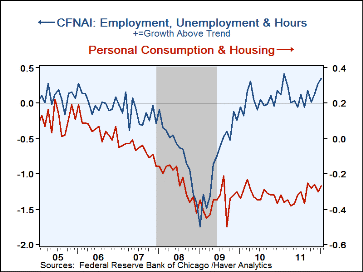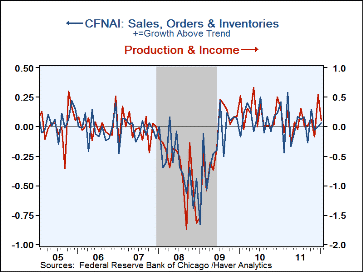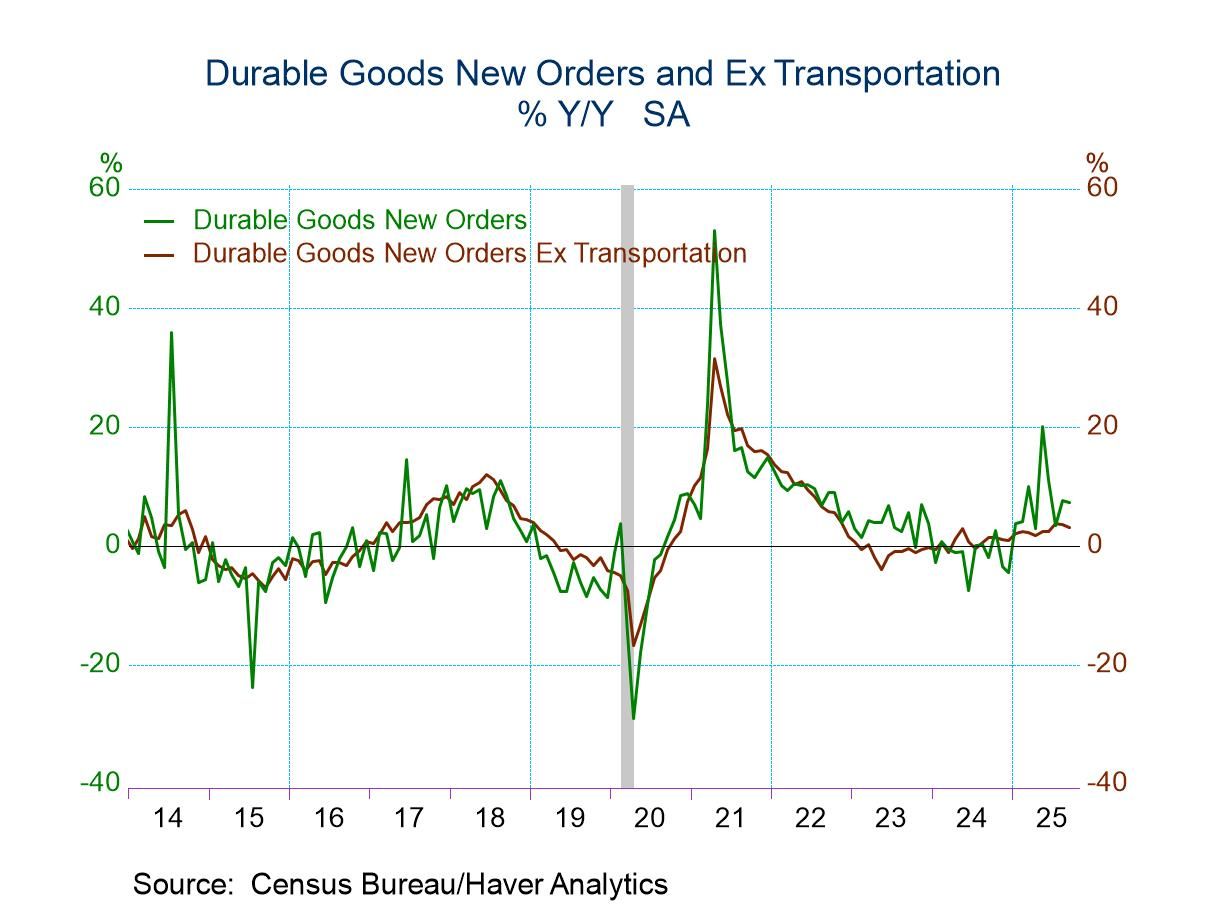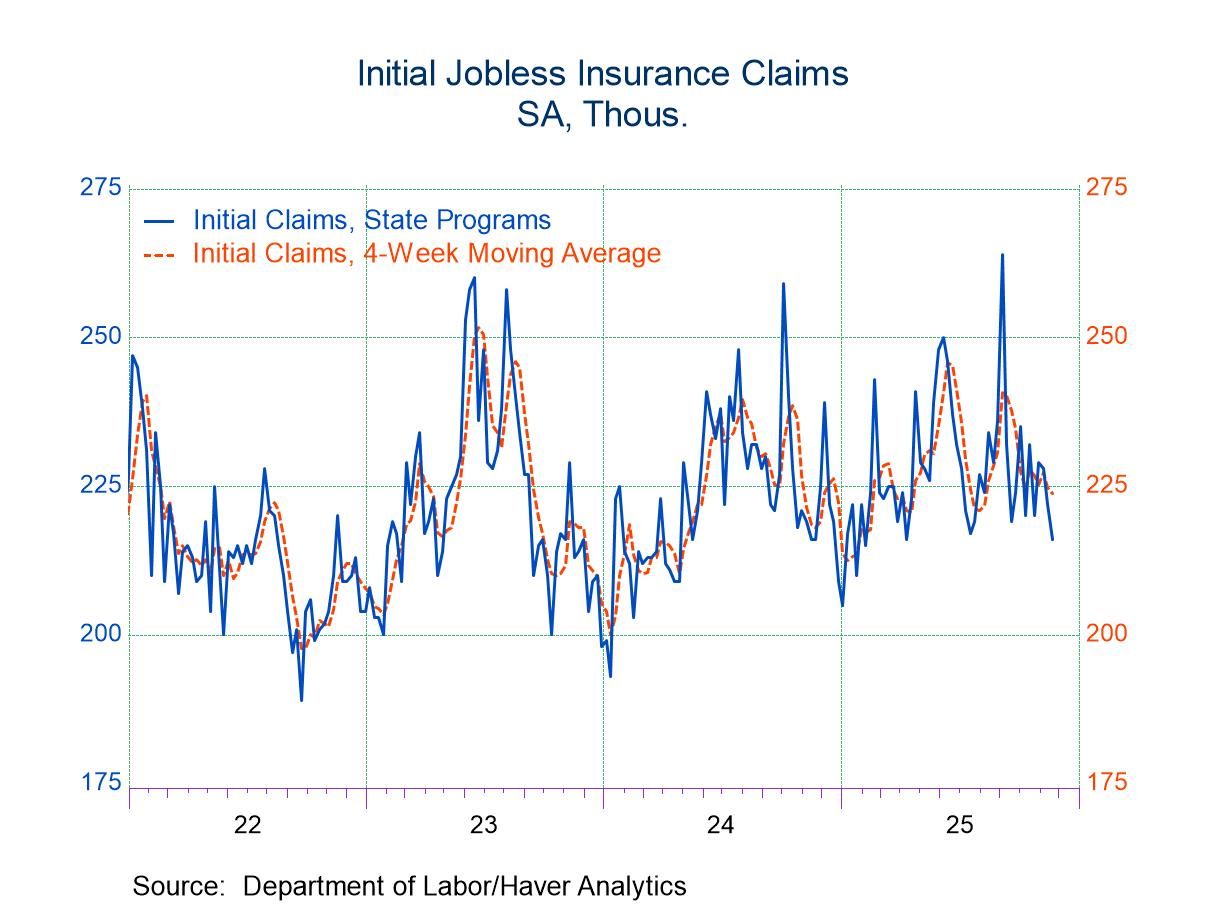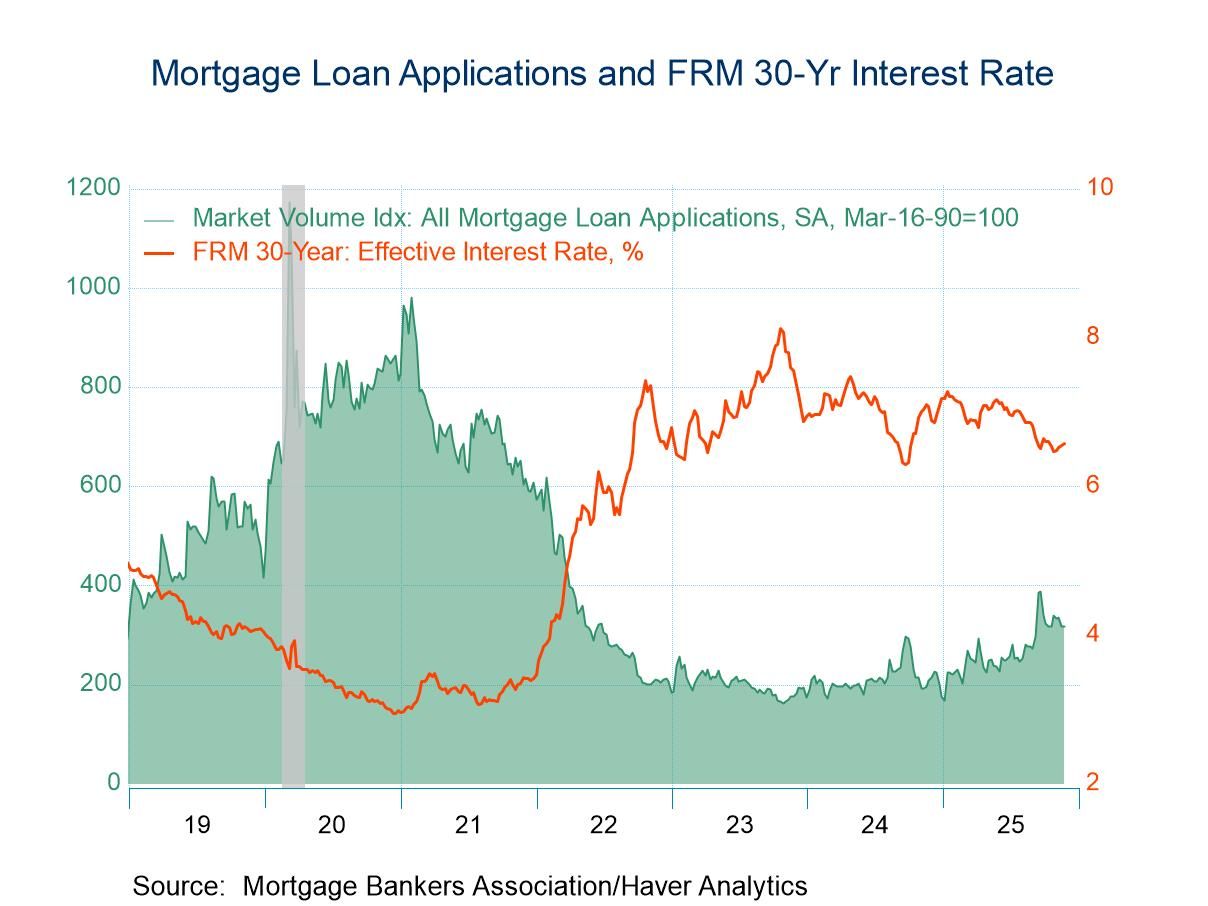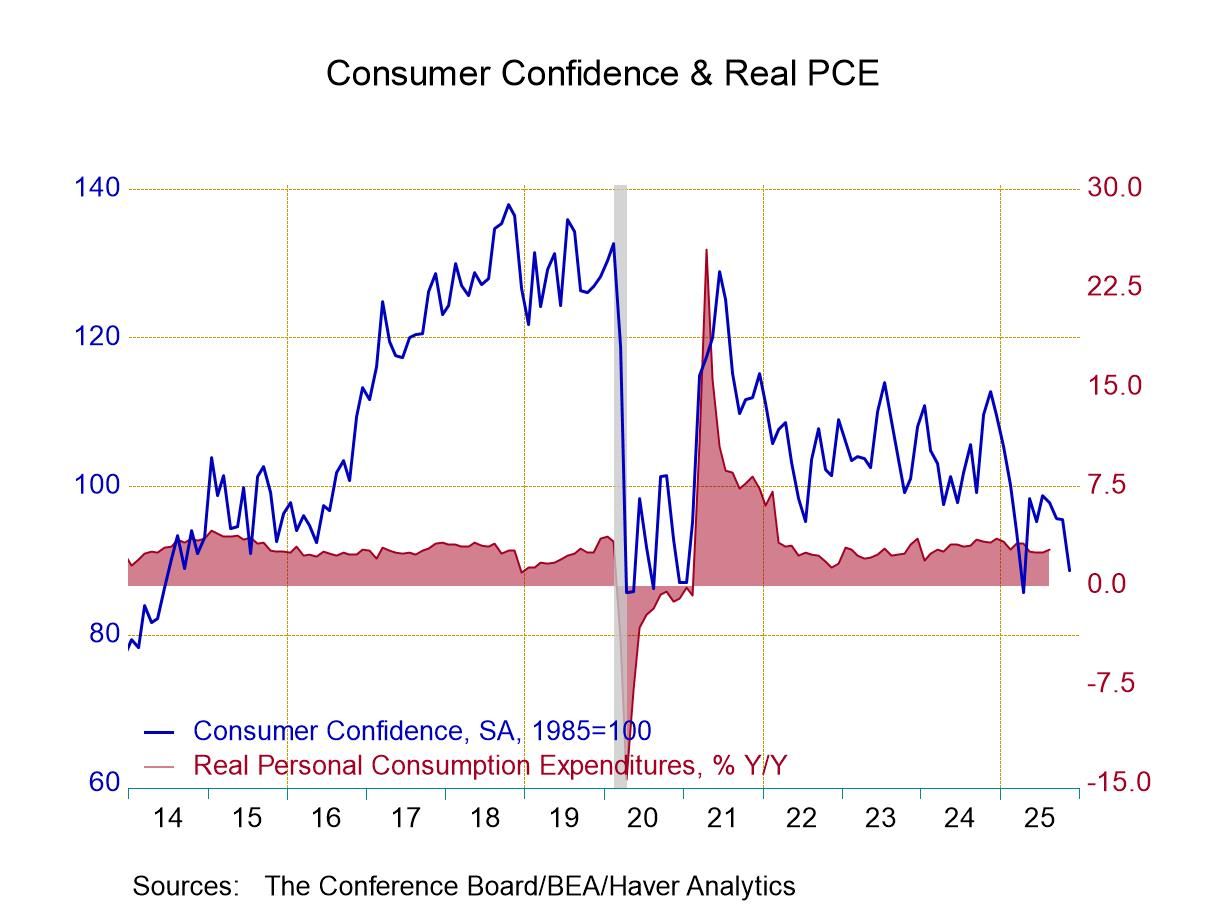 Global| Feb 21 2012
Global| Feb 21 2012U.S. Chicago Fed Index Is Again Positive
by:Tom Moeller
|in:Economy in Brief
Summary
The January National Activity Index (CFNAI) from the Chicago Federal Reserve provides another sign of improving economic momentum. The index slipped to 0.22 from 0.54 in December, which was revised up from 0.17. However, the three- [...]
 The January National Activity Index (CFNAI) from the Chicago
Federal Reserve provides another sign of improving economic momentum. The
index slipped to 0.22 from 0.54 in December, which was revised up from
0.17. However, the three-month moving average rose to 0.14 which was its
highest since last March. The figures had been negative since then. During
the last ten years there has been an 80% correlation between the Chicago
Fed Index and the q/q change in real GDP.
The January National Activity Index (CFNAI) from the Chicago
Federal Reserve provides another sign of improving economic momentum. The
index slipped to 0.22 from 0.54 in December, which was revised up from
0.17. However, the three-month moving average rose to 0.14 which was its
highest since last March. The figures had been negative since then. During
the last ten years there has been an 80% correlation between the Chicago
Fed Index and the q/q change in real GDP.
A lower Production & Income component was behind most of the m/m deterioration in the total. Offsetting that decline was a rise in the Employment, Unemployment & Hours series to its highest since last February. The Chicago Fed reported that fifty of the 85 individual indicators made positive contributions to the index in January while 35 made negative contributions.
The CFNAI is a weighted average of 85 indicators of national economic activity. It is constructed to have an average value of zero and a standard deviation of one. Since economic activity tends toward trend growth rate over time, a positive index reading corresponds to growth above trend and a negative index reading corresponds to growth below trend. During August, 41 of the 85 component series made a positive contribution to the overall index while 44 made negative contributions.
The Chicago Federal Reserve figures are available in Haver's SURVEYS database.
Forecasting inflation with a lot of data from the Federal Reserve Bank of Chicago is available here.
| Chicago Federal Reserve Bank | Jan | Dec | Nov | Jan'11 | 2011 | 2010 | 2009 |
|---|---|---|---|---|---|---|---|
| CFNAI | 0.22 | 0.54 | -0.34 | 0.27 | -0.10 | 0.00 | -1.62 |
| 3-Month Moving Average | 0.14 | 0.06 | -0.18 | 0.15 | -- | -- | -- |
| Personal Consumption & Housing | -0.27 | -0.30 | -0.26 | -0.32 | -0.32 | -0.32 | -0.36 |
| Employment, Unemployment & Hours | 0.35 | 0.28 | 0.13 | 0.12 | 0.12 | 0.04 | -0.82 |
| Production & Income | 0.11 | 0.54 | -0.18 | 0.30 | 0.09 | 0.22 | -0.27 |
| Sales, Orders & Inventories | 0.03 | 0.00 | -0.03 | 0.21 | 0.02 | 0.07 | -0.16 |
Tom Moeller
AuthorMore in Author Profile »Prior to joining Haver Analytics in 2000, Mr. Moeller worked as the Economist at Chancellor Capital Management from 1985 to 1999. There, he developed comprehensive economic forecasts and interpreted economic data for equity and fixed income portfolio managers. Also at Chancellor, Mr. Moeller worked as an equity analyst and was responsible for researching and rating companies in the economically sensitive automobile and housing industries for investment in Chancellor’s equity portfolio. Prior to joining Chancellor, Mr. Moeller was an Economist at Citibank from 1979 to 1984. He also analyzed pricing behavior in the metals industry for the Council on Wage and Price Stability in Washington, D.C. In 1999, Mr. Moeller received the award for most accurate forecast from the Forecasters' Club of New York. From 1990 to 1992 he was President of the New York Association for Business Economists. Mr. Moeller earned an M.B.A. in Finance from Fordham University, where he graduated in 1987. He holds a Bachelor of Arts in Economics from George Washington University.


